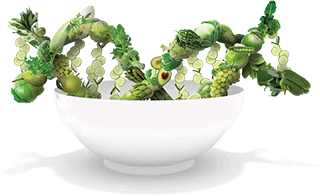This week we’re talking about something we may be getting a little too much of while we’ve been quarantined: added sugars. Did you miss the live episode? Watch the video above.
The key to balancing added sugars is monitoring how much and how often you consume them. No one is perfect! Sugar in isolation and in small amounts isn’t necessarily the problem; it’s when we go overboard. Too much added sugars will increase your risk for certain health issues like obesity, heart disease, cancer, diabetes, and liver disease. It also suppresses the immune system so it can make it harder for your body to respond as well to infections (aka COVID-19).
So, how do you reduce your risk? First, it’s important to understand where we’re getting added sugars. Some sources may be more obvious than others. If you say yes to one or more of these questions you’re likely eating more sugar than you need:
- Do you add sugar to your coffee or tea?
- Are you adding ‘natural sweeteners’ such as agave, coconut, maple syrup or honey?
- Are you consuming fruit juice, soda, or bottled sweet teas regularly?
- Are you eating candy, cakes, pastries and sweetened cereal as daily staples?
What about the not so obvious sources?
Have you checked added sugar content in those protein or energy bars? In some plant-based milks? How about in your condiments, sauces, protein powders and supplements?
The AHA (American Heart Association) recommends that healthy adults limit their intake of added sugar to 9 tsp per day for men and about 6 tsp a day for women (a teaspoon is equal to about 4 grams of sugar). That’s roughly 36 grams per day for men and 25 grams per day for women.
So, how do you track added sugars without going nuts!? Success comes from focusing on behavior changes that end up decreasing added sugar intake as a byproduct.
- Read labels. Sugar grams will be listed. It isn’t always listed as straightforward ‘sugar’, however. A few other names for sugar include evaporated cane juice, fructose, high fructose corn syrup, malt or malt syrup, sorbitol or corn syrup solids.
- Distribute your added sugar intake throughout the day. This helps support even blood sugar control and can reduce cravings.
- Keep eating those fruits and vegetables! Try to limit sugar that you’ve either added to foods or are found in processed foods. You’ll end up dramatically cutting back on your added sugar intake if you start by focusing your efforts on decreasing them from processed foods and increasing their whole food counterparts.
Learn where added sugars are hiding in your diet and pull back the reins on excess intake today! Don’t forget to join me live on Facebook Tuesdays, 1pm CDT.
In good health,


